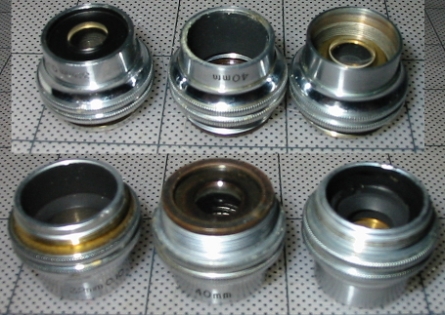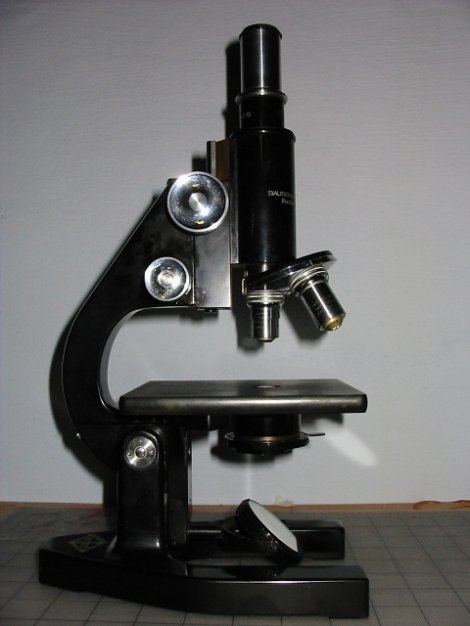There are Objectives and There are Objectives
For anyone who follows microscopy in only it’s modern form, it might seem as if it’s all been figured out and objectives are as fitted to the stand and needs of the microscopist as a key is to a lock. For those who have a few different manufacturers microscopes in the lab it might be more apparent that it is not all figured out; some favor DIN standards or the classic RMS standards, this stand requires infinity corrected objectives while that does not. If the microscopes is “of a certain age” one might be distressed to find that its objectives are par-focal for odd lengths or incompatible with lenses of an earlier or later vintage. Knowing a little optics one will quickly become aware of the importance of using the proper objective for the stand to obtain the best image.
When considering the genuinely antique microscopes one might at first find things more rather than less confusing. Manufacturers of one line or another included different portions of the microscope body when measuring for tube length, in essence quietly adopting different tube lengths than that marked upon the objectives barrel. Cover glass thickness was as variable then as now and so were the thicknesses for which objectives were corrected.
But if the standards to which an objective was built were less, standard, so too was the stand more fluid. Oculars were never integral, tube length was variable, often enormously so, and the microscopists knowledge of their instrument was nearly important as the instrument itself. It can truly be a daunting task to search out the components necessary to outfit an antique microscope be those items hidden in dusty shops or dark attics. More daunting still may be the hunt for the information required to use the latest find effectively. Permit a weak attempt to throw some light on one dark corner.
Projection Objectives in Theory
Most are familiar with achromatic and apochromatic objectives, with oil or water immersion, even the specialized Homal photomicrographic objectives, but the projection objective was an entirely different animal. Designed specifically for micro-projection the objective had several difficulties to overcome. These difficulties will be familiar to the modern worker, however much the method by which they are solved has changed.
Projection adds a variable that is an established constant in normal microscopy, projection distance; the distance at which the projected image forming rays are interpreted by the viewing surface. While the objective provides the magnification of the object, the projection distance is responsible for enlargement only; a magnification of ten diameters is a magnification of ten diameters be the image an inch across or a foot. All of the visual information that will be present in the projected image is resolved (added) by the objective. The enlargement serves only to act upon what is already present and might be of any size depending on the need of the microscopist.
The projected image increases in size as the distance at which the projection is interpreted is increased because the light which exits the optical system is diverging. As the light diverges a constant amount of illumination is asked to light an ever larger area. Naturally, one can not expect to light up a drive-in theater screen with a classroom film-strip projector; so too one should not expect to set an image five feet high on the far wall of the room with the usual sort of illuminator. The projected image will become dimmer as it is enlarged and any aberration will become more apparent.
Because spherical aberration increases at the edges of the field of view, it was frequently practice to simply limit the field of view to provide a restricted but more perfect image. Spherical aberration might also be corrected by the introduction of additional component lenses which would entail an attendant decrease in brightness, just as with chromatic aberration. Spherical aberration and chromatic aberration are two difficulties that all objectives strive to overcome to a greater or lesser degree. Doing so while maximizing the amount of light which enters (and therefore exits) the system is a similarly common goal.
One might question why then a projection objective should be any different from a standard objective. In normal (non-projection) objectives the entire optical system was considered and constructed so that the virtual image viewed by the microscopist is as perfect as might be for a particular need. For projection microscopy the real image is the one which must be rendered the most perfect and the equations of the optician altered accordingly. Projection objective would often be employed alone, without the addition of an ocular all of which must be accounted for in its construction.
In any case the important thing to remember is that normal objectives work with the microscopists eye as the final component of their optical system, for projection objectives that final component is the screen upon which the image is thrown.
Still with me? Don’t worry this will all get more fun shortly. -K


